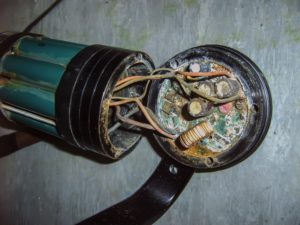Dr. Howard Schubiner is board-certified in pediatrics, adolescent medicine, and internal medicine. He was a full time professor at Wayne State University for 18 years and now works at Providence Hospital in Southfield, MI. He is the founder of the Mind Body Clinic and the co-author of several of my posts on the Neurophysiological Disorder.
Neurophysiological Disorder is news to a surgeon
I am a surgeon. Like all surgeons I am focused on finding a source of pain that I can fix. When this happens, my patient is happy. When I make my patient happy, I’m the hero, and that makes me happy. Not finding an exact cause of your pain is almost as frustrating for me as it is for you. The Doctor is Missing Something
Neurophysiological Disorder (NPD)
Dr. Schubiner presented recent neurological research demonstrating that the brain has a quality called neuroplasticity, the ability to create new nerve pathways in response to life events. When you learn to ride a bicycle or play the piano or swing a golf club, your brain cells develop new neural circuits that are connected to your body. They consist of millons of nerve cells. What most doctors do not know is that pain can be caused by these learned embedded circuits. Even when there is no tissue damage in the body, such as a tumor, fracture, or infection these connections can cause real physical pain.

Emotional Pain = Physical Pain
Recent research done in Pittsburgh has shown that the brain can create pain which is identical to the pain of a physical injury. We have also learned that an emotional insult is processed in exactly the same way in the brain as a physical injury (Kross). We now know that stressful life events and our emotional reactions to them can cause severe pain. Treating this type of pain with pain medications, injections, or surgery is usually not effective. These treatments often leave the patient extremely frustrated and depressed. However, when the true cause of the pain is recognized, these pathways can be reversed by programs utilizing NPD principles. Dr. Schubiner’s book Unlearn Your Pain outlines one process. This website is also another resource along with the book Back in Control. The key is using tools that create alternative neurological detours.
Your brain can generate pain
The notion that all pain has an identifiable structural source overlooks several key points:
- Soft tissue injury can occur at a level that is below the sensitivity of any diagnostic test.
- Tissues can be irritated without being torn—another undetectable injury. The irritation occurs through inflammation, which is a chemical, not mechanical, source.
- There is no routine diagnostic test to specifically tell us that the nervous system is “short circuiting” from the Neurophysiological Disorder.We do know that if a “functional MRI” (which shows what part of the brain is “active”) was performed on a patient who suffers from NPD, then the pain parts of the brain would light up.
Fibromyalgia
- Interestingly, in fibromyalgia, the whole brain lights up like a Christmas tree. Many physicians have historically felt that this problem was imagined or “psychological.” Your brain, through chemicals and direct connections, affects the activity of EVERY cell in your body. I now think that my body is just an extension of my brain. It is how my brain interacts with my environment. Just because we do not have a diagnostic test to prove that you have a disease does not mean your symptoms do not exist. In fact, NPD is possibly the most common source of illness.

We enjoy treating NPD – especially chronic pain
The best part of the diagnosis of Neurophysiological Disorder is that NPD is curable. Learning of this syndrome has dramatically changed my practice. The treatment paradigm that evolved with the DOC project is inadvertently a variation of Dr. Schubiner’s program, which evolved from his training with Dr. John Sarno. Dr. Schubiner was one of the keynote speakers at a course that I co-chaired, “A Course on Compassion – Empathy in the Face of Chronic Pain”.
We both witness patients become pain free on a regular basis. If I seem a little overenthusiastic about this whole program, it’s because I am. There is nothing more rewarding than seeing a patient without hope regain his or her life.
Video: Dr. Schubiner’s Lecture at “A Course on Compassion”
- Kross, E, et al. Social rejection shares somatosensory representations with physical pain. www.pnas.org/cgi/doi/10.1073/pnas.1102693108.
